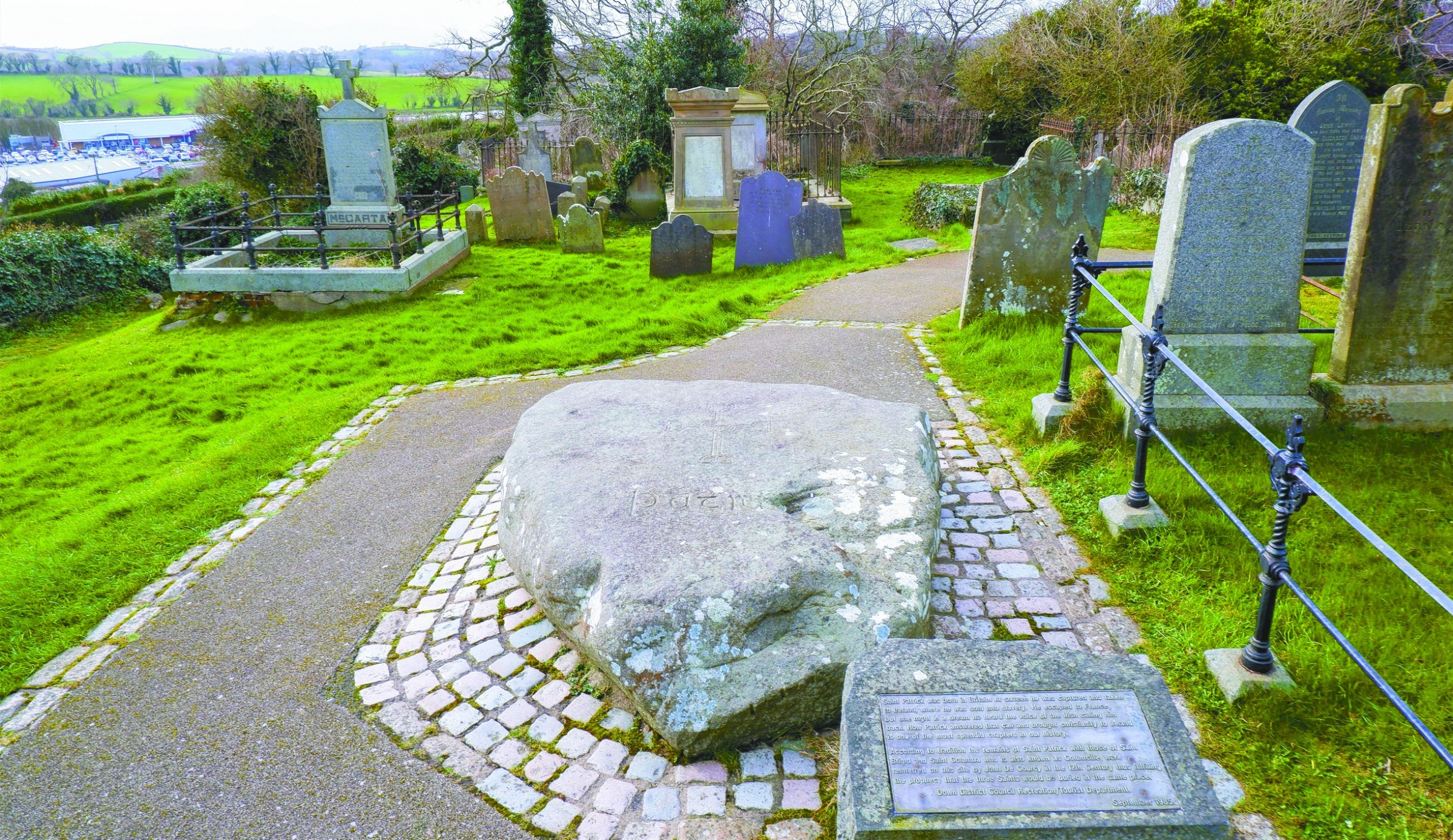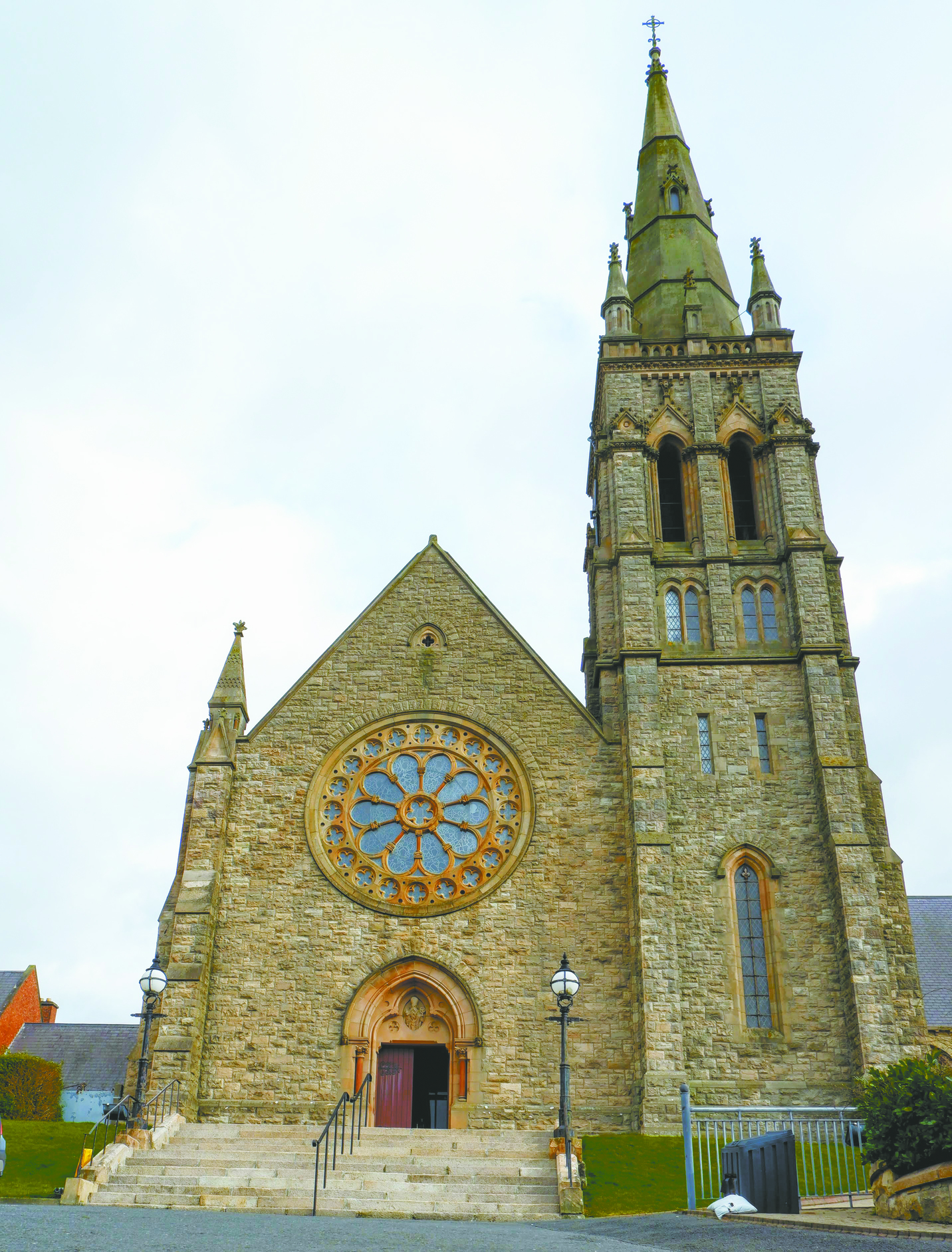Meeting St. Patrick on the Emerald Isle
Time-honored Irish devotion to patron saint continues.

Christ with me, Christ before me, Christ behind me,
Christ in me, Christ beneath me, Christ above me,
Christ on my right, Christ on my left,
Christ when I lie down, Christ when I sit down,
Christ in the heart of every man who thinks of me,
Christ in the mouth of every man who speaks of me,
Christ in the eye that sees me,
Christ in the ear that hears me.
— Excerpt from St. Patrick’s Breastplate
St. Patrick, the beloved patron saint of Ireland, grew up in a Christian family on the west coast of Britain in the late fourth century. He was kidnapped by Irish pirates and sold into slavery as a teenager. After spending years in slavery, Patrick escaped and returned to his family. However, Patrick was determined to return to Ireland and bring Christianity to the pagans there. He spent the remainder of his life converting the Irish people and planting the roots of Christianity in Ireland.
St. Patrick’s influence has spread throughout Irish tradition and culture, and he is still much revered by the Irish people today.
Having lived in Ireland for about two months, as I write this, I have discovered so much about St. Patrick.
He is woven irrevocably into the Irish identity, and you really do see him everywhere. From churches to gift shops to street names, St. Patrick is present among Irish culture. St. Patrick’s faith and teachings were simple: He wanted others to know God’s love.
Emer Morris is a missionary with NET Ireland, a branch of National Evangelization Teams, which is a Catholic organization with Catholic missionaries that ministers to teens. Morris explained Patrick’s influence on Irish culture for the Register.
“His story is known far and wide, and he is as honored now as he has ever been,” according to Morris. “I think it’s lovely how even folk tales will have a devotion to St. Patrick. Despite St. Patrick being a real person who lived, he’s mentioned a lot in Irish mythology.”
Morris described legends and stories such as Tír Na nÓg. In the tale, Oisín, a solider, runs away from Ireland to live in the land of eternal youth (Tír Na nÓg) for three years. Upon his return to Ireland, he turns into an old blind man, having aged 300 years. St. Patrick finds Oisín and takes care of him, converting him to Catholicism and giving him peace at the end of his life.
Various holy sites throughout Ireland commemorate the saint, all with various tales and legends associated with them. For many Irish people, Catholic or otherwise, visiting these sites is an important part of their heritage.
In the west of Ireland in County Donegal lies St. Patrick’s Purgatory, located on a lake known as Lough Derg. According to legend, God led St. Patrick into the wilderness and showed him a cave that was the entrance to purgatory.
As the tale goes, anyone who stayed in the cave for a day and night would be cleansed of their sins. Patrick built a church over the site, and it has been a prominent pilgrimage site since the 12th century. Hundreds of pilgrims visit each year and attend retreats on the island.
Croagh Patrick is perhaps the most well-known pilgrimage dedicated to St. Patrick. Known as “Ireland’s Holy Mountain,” Croagh Patrick overlooks Clew Bay in County Mayo. St. Patrick spent 40 days fasting on the mountain in A.D. 441. Legend has it that St. Patrick banished snakes from Ireland on Croagh Patrick. The legend, which sees the snake as a symbol of the original tempter of Adam and Eve, speaks to the importance of ridding the island of paganism and one’s soul of sin. For many Irish people, climbing Croagh Patrick is a rite of passage, and many even accomplish the feat barefoot.
A perhaps lesser-known site lies in the town of Downpatrick, located in Northern Ireland. St. Patrick’s tomb lies at the top of Down Hill in the town. He lies in the graveyard adjacent to the now-Protestant Down Cathedral. The tomb consists merely of a large granite slab with “Patric” carved upon it. The hilly Irish countryside serves as the backdrop to St. Patrick’s tomb, and as I stood at the foot of Patrick’s tomb, I could not help but marvel at this great saint who has inspired the faith of so many.

Father John Murray, the parish priest of St. Patrick’s Church in Downpatrick, explained how the town honors St. Patrick on his feast day. The devotion to St. Patrick unites the town in celebration. Traditionally on St. Patrick’s Day, all Christians join together in their celebration and love of the saint. While there is a history of taut relationships between Protestants and Catholics in Ireland, this is not the case in Downpatrick. Various Christians make the trek from Saul (where Patrick landed when he returned to Ireland) to Downpatrick, a distance of about 2 miles. A joint service takes place in Down Cathedral, to be near to Patrick’s tomb, and after the service there is a parade through the town.
Father Murray believes that the Irish devotion to St. Patrick is somewhat complex. “Patrick has become, in a sense, mythologized. In a modern way, he is less the Christian saint and more the excuse for a festival,” Father Murray said.
But amid the tradition, the priest wants to see the saint reemerge as a powerful intercessor for the Irish people. “We honor him and love him. But there is still a lot of work to be done,” Father Murray explained in terms of devout reliance on the isle’s patron saint. “I think we are beginning in Ireland to rediscover Patrick.”
Father Murray explained that, though Downpatrick is a bit off the beaten path, the town does receive up to 20 groups of pilgrims per year, all seeking St. Patrick’s intercession and following the saint’s journey across Ireland.

At the end of my visit to St. Patrick’s Church in Downpatrick, Father Murray kindly gave me some booklets telling St. Patrick’s story and a book he wrote on the saints.
I also purchased a small St. Patrick figurine made out of Irish turf, so I would always have a piece of Ireland to remember my pilgrimage.
St. Patrick’s holy model shows the world what it means to always look to Christ. Judith Dunne, a wife and home-schooling mother residing in County Wicklow, looks to St. Patrick as a reminder to seek God’s presence throughout her life.
“I feel like I can be my authentic self with St. Patrick,” she said of her personal devotion.
Dunne’s connection to St. Patrick began at a young age. She grew up beside the Hill of Tara, where legend claims St. Patrick spoke to the high king of Ireland and explained the Trinity using a shamrock. Additionally, Dunne’s husband, Colin, was born on St. Patrick’s Day. “We love St. Patrick here,” she said. “We’ve done Croagh Patrick, and my husband has been to Lough Derg four times.”
Whenever Dunne faces an uncomfortable situation, she feels the saint’s presence. “I find that St. Patrick comes to me more than I come to him,” she explained.
St. Patrick inspires the Dunne family to pray St. Patrick’s Breastplate and to seek God’s presence in everyday life. “Every time I pray to St. Patrick, I laugh. He gives me a day off in Lent and helps me feel free in Christ,” Dunne continued.
When I visited St. Patrick’s tomb and stood there, marveling at the great saint, I felt a unique kinship with him. Upon graduating college, I made the decision to spend a year in Ireland. As I walked down the hill from St. Patrick’s tomb, after praying St. Patrick’s Breastplate, I saw a plastic shamrock toy left on the ground. I knew that this was the sign I was waiting for, as I had been praying for God to give me peace for my decision to come abroad. I had recently started to invoke St. Patrick. When I saw the shamrock, the symbol so often associated with St. Patrick, I felt that St. Patrick was sending me a sign that I was meant to be in Ireland. St. Patrick, pray for us!
Mary Grace Dostalik, a recent graduate of Benedictine College, writes from Ireland.
- Keywords:
- mary grace dostalik
- st. patrick
- travel

















